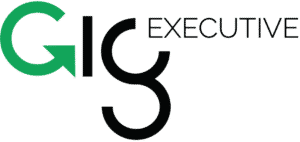Coming to grips with Diversity

Diversity beyond gender is not yet high on the agenda of Boards or Chief Executives, however many decision-makers are increasingly conscious that gender balance is actually part of a wider need for diversity, which includes Cultural and Linguistic Diversity (CALD). According to the Australian Government [i], a CALD workplace means having employees who:
- are from different countries, including English-speaking countries such as Canada
- have different cultural backgrounds
- can speak other languages besides English
- are from different areas in Australia, including regional towns
- follow different religions.
While many executive search firms have embraced the need for gender balance, few have yet come to grips with the more complex issues associated with executive recruitment for and leadership of CALD workplaces – including the need to recruit more CALD leaders to Boards and senior executive teams. One of the reasons may be that traditional search and assessment approaches are unconsciously biased against CALD – they fail to address the need to nurture CALD leadership talent for the future, they fail to look beyond the narrow boundaries of traditional candidate pools and they fail to address the unconscious bias that can lead selection committees to prefer candidates who share their own cultural and linguistic backgrounds.
Fisher Leadership has embraced the CALD leadership challenge for many years now and has had much success in finding suitable CALD talent, including indigenous candidates, for Boards and senior executive roles. In championing the need for more positive CALD leadership, we draw not only on the proven principles of our Positive Leadership Framework for Executive Search and Recruitment, but also on our exceptionally broad international talent networks where ideally qualified CALD talent can often be found.
Why have we been so keen to promote the benefits of CALD?
Research [ii] has revealed that including people with different language backgrounds and cultural origins on Boards and in senior executive teams boost their capacity for internal engagement within the organisation, innovative thinking and effective decision making. In a metadata review by the UK Government’s K4D Helpdesk from 2017 [iii], the broader organisational benefits of embracing diversity and inclusion were summarised as:
reduced costs; improved resourcing of talented personnel; better products and services; enhanced corporate image; improved creativity and problem-solving; better decision making; innovation; greater flexibility; increased productivity; improved organisational performance and efficiency; enhanced trust in relationships, satisfaction and commitment within the workforce; and improved customer relations and service delivery.
While there is little research relating directly to the Public Sector in Australia, a comprehensive recent review of relevant evidence, backed up by qualitative research, was released by the NSW Public Service Commission’s 2017 report titled Diversity and inclusion in the NSW Public Sector: A conversation [iv]. This report summarises the evidence for positive public service impacts on rates of absenteeism and customer satisfaction, attributing these to a reduction in workplace stress and improved capacity to engage with members of the public.
These findings are highly consistent with evidence from research in the corporate sphere, which suggests that CALD only creates positive impacts when it is fully embraced by leadership, based on a positive mindset about making it work.
The Report suggests leaders need to:
- ‘Say’: Encourage the conversation about diversity and inclusion, celebrate success and share their personal story
- ‘Prioritise’: Bring a diversity and inclusion focus to each decision they make
- ‘Act’: Role model inclusive behaviour, including challenging own biases, and call out bad behaviour
- ‘Measure’: Track progress by setting KPIs for diversity representation and cultural change, as well as listening to the personal experiences of their staff
In summary, getting more cultural and linguistic diversity on Executive Teams and Boards is both ethically important and effective as a way to gain cross representational views, understand your clients and customers better, gain a broader outlook in the world and reflect the community we live in.
If you want to know more about what it takes to realise CALD outcomes at senior leadership levels, Fisher Leadership would be happy to discuss the steps needed to come to grips with this important but challenging aspect of future leadership success, please contact Jo Fisher on +61 1300 347 437.



